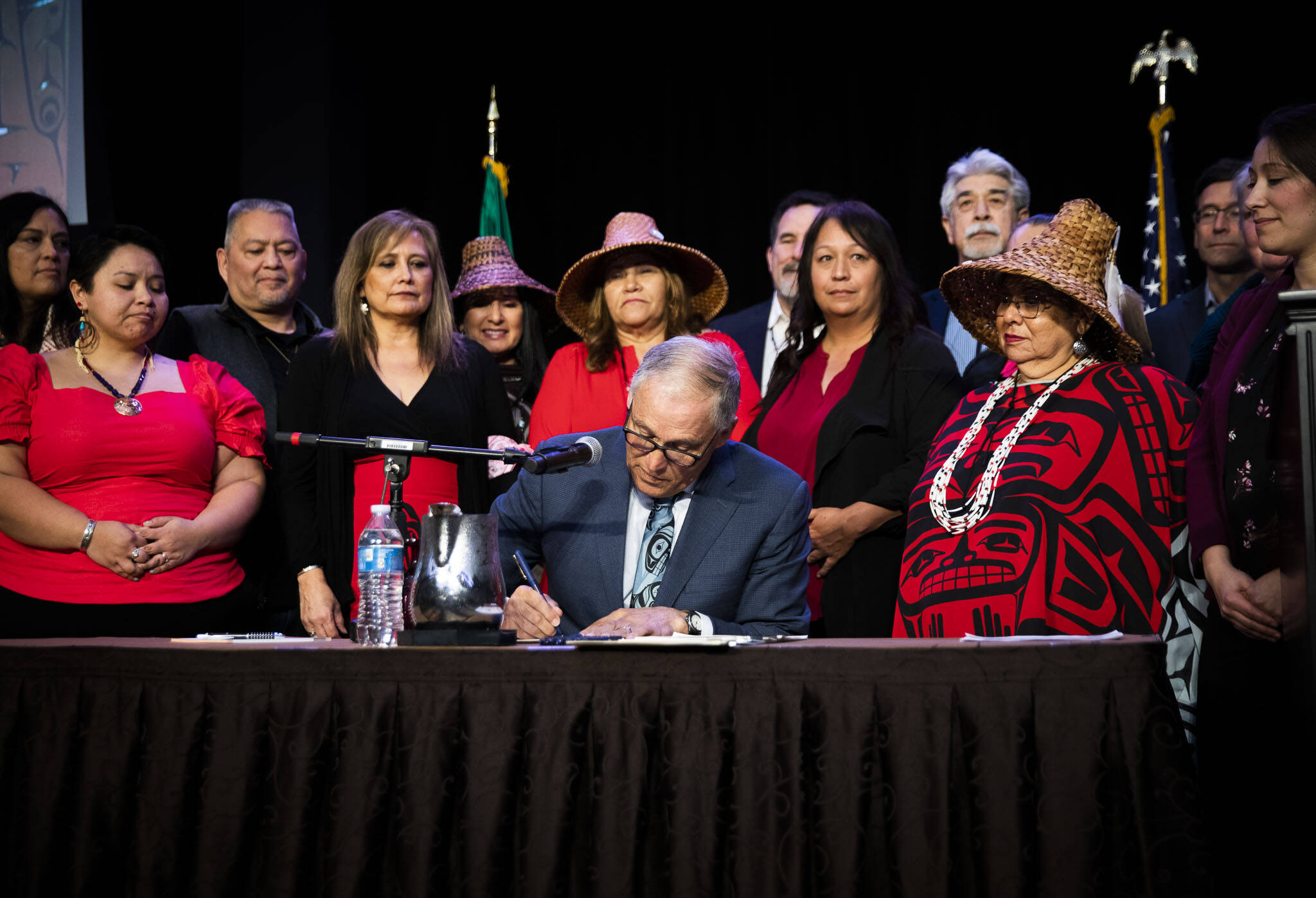TULALIP — It’s common for one or two Tulalip tribal members to be reported missing each month, according to Tulalip Police Chief Chris Sutter.
State highway signs will now alert drivers when an Indigenous person goes missing and is believed to be in danger.
At midnight July 1, Washington State Patrol launched the new Missing Indigenous Person Alert system. It will broadcast messages on signs and the highway advisory radio system. It will also notify all Washington law enforcement electronically.
It’s similar to an Amber Alert for children or a Silver Alert for seniors.
“We’re really trying to have a multi-prong, multi-dimensional approach to missing persons,” Sutter said. “Adding the … alert system is just another tool that we can add to our toolbox.”
The new notifications will say “MIPA” alert, said Carri Gordon, director of the Washington State Patrol’s missing and unidentified persons unit. If there’s a car related to the disappearance, the make, model, color, license plate and other identifying information gets shared.
Not every missing Indigenous person will trigger an alert. The system will only be activated if the person’s disappearance is unexplained, involuntary or suspicious; if there’s enough identifying information — photos or physical descriptors — about the missing person to help with their recovery; and if the incident has been reported to law enforcement.
In the future, these alerts could show up on people’s cell phones, Gordon said. The technology isn’t up to speed yet.
Tulalip tribal leaders, law enforcement and families of the missing have called the program a good first step. Many Tulalip families recall decades of grassroots efforts to find missing people.
State Rep. Debra Lekanoff, D-Anacortes, sponsored the bill to create the missing Indigenous person alert system, the first of its kind in the nation. Lekanoff is the only Native American woman serving in the state Legislature.
“Our sisters, our aunties, our grandmothers are going missing every day,” Lekanoff said. “As my good mentor, my auntie (Patricia) Lightfoot, tells us, it’s been going on way too long.”
The Urban Indian Health Institute in 2018 identified 506 missing and murdered American Indian and Alaska Native women and girls across 71 cities. Of those, 71 were in the state of Washington. Seattle had the highest number: 45.
Washington State Patrol reported 128 missing Indigenous people, as of June 13.
Today, Tulalip Police are equipped to deal with some of the “jurisdictional issues,” Sutter said, and many of the cases on the reservation are solved.
But many issues still persist, he said.
Not all organizations recognize tribal court warrants and subpoenas. Oftentimes cell phone records are helpful to track a missing person’s whereabouts, but sometimes those requests are denied, Sutter said.
“And that is a challenge that we currently are fighting and dealing with in one of our open cases right now,” he said.
One Tulalip tribal member has been missing since 2020. Mary Ellen Johnson-Davis’ last known contact was a text message around 2 p.m. Nov. 25, 2020.
While the alert system is a significant step, Sutter said, tribal law enforcement need lawmakers to secure more technical support and resources for their efforts. That could mean adding “preventative” measures like mental health care to help decrease peoples’ vulnerability. Or “having good laws to protect Native women from predators,” like the Violence Against Women Act, he said.
“We have far too many Indigenous, Native American people that are missing,” Sutter said. “These cases are very labor-intensive and many tribal law enforcement agencies don’t have the full complement of resources and detectives to fully work these cases. So having more resources … is a real positive thing.”
Isabella Breda: 425-339-3192; isabella.breda@heraldnet.com; Twitter: @BredaIsabella.
Talk to us
> Give us your news tips.
> Send us a letter to the editor.
> More Herald contact information.

























